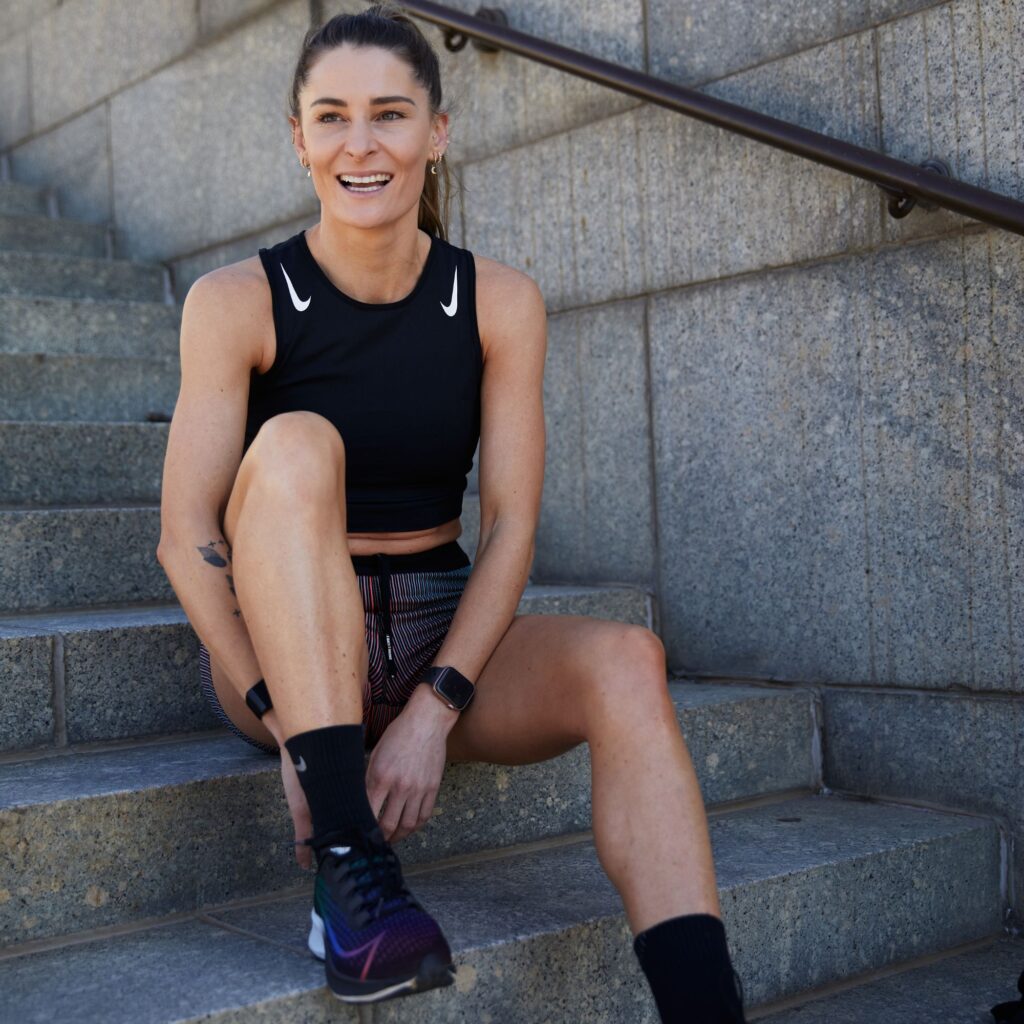
- POPSUGAR Australia
- Fitness
- How These 2 Female Athletes Used Their Menstrual Cycle to Hit PBs
How These 2 Female Athletes Used Their Menstrual Cycle to Hit PBs

As young athletes, Lydia O’Donnell and Esther Keown were never spoken to about their periods. Their menstrual cycles were seen as nuisances and they were encouraged to do anything to get rid of them.
At the same time, they were also told they needed to lose weight. They were both runners, and it was thought at the time that being lean or thin would make them perform better. These words from coaches pushed both into disordered eating behaviours and body image issues.
They fell into what’s known as Relative Energy Deficiency Syndrome (RED-s), which interrupted their health and saw them losing their menstrual cycles as a result. As they put it, they restricted their diets to fit into what society expected them to look like as female runners and even celebrated when they didn’t get their periods.
“Unfortunately, the stigma around periods and the issue around body image are extremely intertwined,” says Keown. “By not having a safe space to speak about our menstrual health, we had no idea that losing our periods by under-fuelling and over-training was bad for us. We had no idea we were putting our long-term hormonal health, bone health and more, on the line.”

Today, the two are co-founders of Femmi, a running and strength coaching service for female athletes. The two work with athletes’ unique physiology to build a running or gym plan. They specifically take into account menstrual cycles.
“At 28, after I had recovered from RED-s and had a healthy menstrual cycle back, I went on a journey of exploration and education,” says O’Donnell. “I began to learn about the menstrual cycle in a way that was empowering. I learnt that my menstrual cycle wasn’t just a four-to-five-day period each month, that there are different phases of the cycle, and that my hormones were actually changing every single day.”
O’Donnell says a few years ago, she began tracking her cycle in the Health app on her Apple Watch to start to understand where she was at and how she was feeling. For the first six months, she played with different approaches to training. She says that although she realised she isn’t someone who’s significantly affected by her hormonal shifts, she does feel more energised during the follicular phase of her cycle, as compared to the late luteal phase.

“Throughout my follicular phase, I began to push the intensity of my workouts, knowing that I could recover much quicker and adapt to the training load better,” O’Donnell says. “As I moved into the luteal phase, and especially the late luteal phase, the intensity would be pulled back.
“This doesn’t mean I wouldn’t train during this phase, it just means that instead of raising my heart rate really high in short, sharp interval sessions, I would lower the session to more achievable paces.”
Within that first year of tracking her cycle and adapting her training, she started to perform significantly better in both training and racing. One of the most incredible outcomes from training to her cycle was that she began to feel more compassionate towards herself. She started to only execute training that was appropriate for where she was in her cycle, and, as a result, would be able to hit the paces and distances she’d set.
“This grew my confidence in myself as an athlete, and confidence is everything when it comes to sport,” she says. “Within two years of cycle training, I was able to break all of my personal best times. I broke my 5km time by over 30 seconds and my 10km time by nearly two minutes. I achieved a new PB in both the marathon and half marathon, and even qualified for the Half Marathon World Championships, a goal I had been chasing for years.”

“Our periods are amazing, and the most incredible thing we can do for ourselves as people who menstruate is to track our cycles,” says Keown. “By tracking your cycle, you will begin to understand what is going on and why you potentially feel a certain way on some days and different on others. You’ll begin to feel more in control of yourself and empowered by the way your body is working for you.”
Keown also notes that cycle tracking can help you pick up on any potential irregularities of it, which you can then use to better understand your health. She uses an Apple Watch to constantly check her heart rate and ensure it’s in line with her cycle, setting goal heart rate zones and then only training within them.
“Although I have now been tracking my cycle for years and aligning my training to my cycle, I still have days where I get it wrong,” O’Donnell says.
“I have days when I feel exhausted even on a ‘good hormone day’. And that’s okay, too. Every person who menstruates can experience their cycle differently, and even within one person, our symptoms can vary from cycle to cycle. But by tracking your cycle and paying attention to how you feel, you should start to see patterns across cycles, months, seasons and years.”



